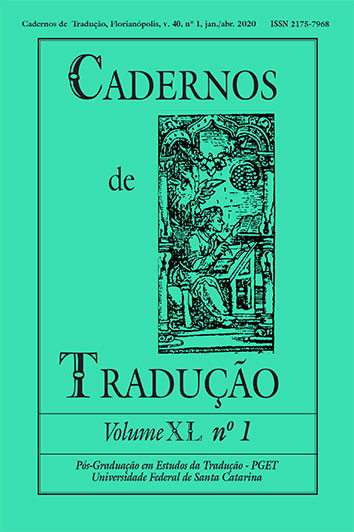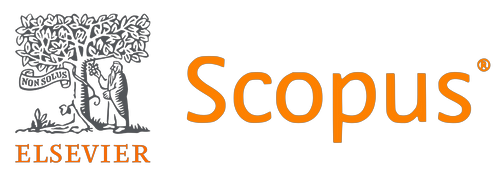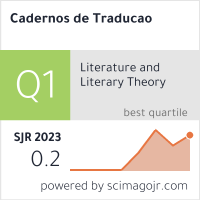Shakespeare checks into the digital world: rewriting his plays using Emojis
DOI:
https://doi.org/10.5007/2175-7968.2020v40n1p34Abstract
This study analyzes the OMG Shakespeare series, which aims at bringing Shakespeare’s plays to young audiences using digital language. The series features rewritings of Shakespeare’s plays into WhatsApp-message format. There are four titles available: srsly Hamlet, Macbeth #killingit, YOLO Juliet and A Midsummer Night #nofilter. The analysis seeks to determine: i) the general concept of the series; ii) the main strategies used in the intermedial adaptation of the plays and iii) the relationships between verbal and visual languages in the texts. The theoretical framework relies on Irina Rajewisky’s (2010) and Werner Wolf’s (1999) concepts of intermediality, Charles Peirce’s (1998) theory of signs, Lars Elleström’s (2010, 2013) conceptual framework on modality and media and on Linda Hutcheon’s (2013) concepts of adaptation.
Riferimenti bibliografici
Alshenqeeti, Hamza. “Are Emojis Creating a New or Old Visual Language for New Generations? A Socio-semiotic Study”. Advances in Language and Literary Studies. 7.6 (2016): 56-69. Australian International Academic Center. 10/02/2019. http://www.journals.aiac.org.au/index.php/alls/article/view/2823
Bloom, Harold. The Western Canon: The Books and School of the Ages. 1st ed. New York/San Diego/ London: Harcourt Brace & Company, 1994.
Boston, Michelle. “Six reasons Shakespeare remains relevant 400 years after his death”. USC News, February 10, 2016. Web. 8/06/2019 https://news.usc.edu/91717/six-reasons-shakespeare-remains-relevant-400-years-after-his-death/
Elleström, Lars. “Iconicity as meaning miming meaning and meaning miming form.” Signergy. 9. edited by C. Conradie et al. Amsterdam/Philadelphia: John Benjamins Publishing Company, 2010: 73 – 100.
Elleström, Lars. “The Modalities of Media: A Model for Understanding Intermedial Relations.” Media Borders, Multimodality and Intermediality. Hampshire/New York: Palgrave Macmillan, 2010: 11-50.
Elleström, Lars. “Spatiotemporal aspects of iconicity.” Iconic Investigations, edited by Lars Elleström, Olga Fischer and Christina Ljungberg. Amsterdam/Philadelphia: John Benjamins Publishing Company, 2013: 95-117.
Elleström, Lars. “Adaptation and Intermediality.” The Oxford Handbook of Adaptation Studies, edited by Thomas Leitch. New York: Oxford University Press, 2017: 509-526.
Elleström, Lars. “Identifying, Construing, and Bridging over Media Borders.” Scripta Uniandrade. 16:3 (2018): 15-30. Web. 10/02/2019. https://uniandrade.br/revistauniandrade/index.php/ScriptaUniandrade/article/view/1162/926
“Emoji.” Merriam-Webster.com, Merriam-Webster, 2019. Web. 13/02/2019. www.merriam-webster.com/dictionary/emoji
Garber, Marjorie. Shakespeare and modern culture. New York/Toronto: Pantheon Books, 2008: xiii-xxxv.
Hateley, Erica. Shakespeare in Children’s literature: gender and capital culture. New York/Abingdon: Routledge, 2009.
Hutcheon, Linda with O’Flynn, Siobhan. A theory of adaptation. 2nd ed. London and New York: Routledge, 2013.
Matei-Chesnoiu, Monica. “Space, Place, and Shifting Worlds in Shakespeare and Cervantes”. Acta Iassyensia comparationes, special issue: 400 years with Shakespeare & Cervantes. Universitatea Alexandru Ion Cuza, 2017. Web. 10/02/2019. literaturacomparata.ro/aic/?page_id=677&lang=fr
Oittinen, Riitta. “Audiences and influences: multisensory translations of picturebooks.” Whose Story? Translating the Verbal and the Visual in Literature for Young Readers, edited by Maria Gonzáles Davies and Riitta Oittinen. New Castle: Cambridge Scholars Publishing, 2008: 3-18.
“OMG Shakespeare!” RHTeachersLibrarians.com, Random House Children’s Books, 2015. Web. 10/02/2019. https://images.randomhouse.com/promo_image/9780553535396_3456.pdf
Peirce, Charles Sanders. The Essential Peirce: Selected Philosophical Writings, v.2. Edited by the Peirce Edition Project. Bloomington/ Indianapolis: Indiana University Press, 1998..
Rajewisky, Irina O. “Border Talks: The Problematic Status of Media Borders in the Current Debate about Intermediality.” Media Borders, Multimodality and Intermediality, edited by Lars Elleström. Hampshire/New York: Palgrave Macmillan, 2010: 51-68.
Rippl, Gabriele. “Introduction”. Handbook of intermediality: literature – image – sound – music, edited by Gabriele Rippl. Germany: De Gruyter, 2015: 1-31.
Shakespeare, William; Carbone, Courtney. Macbeth #killingit. New York: Penguin Random House, 2016.
Shakespeare, William; Carbone, Courtney. srsly Hamlet. New York: Penguin Random House, 2015. Impresso
Shakespeare, William; Wright, Brett. A midsummer night #nofilter. New York: Penguin Random House, 2016.
Shakespeare, William; Wright YOLO Juliet. New York: Penguin Random House, 2015.
Shuy, Roger W. “Four Misconceptions about Clarity and Simplicity.” Language Arts. 58.5 (1981): p. 557–561. Web. 10/02/2019 www.jstor.org/stable/41961366
Wolf, Werner. The Musicalization of Fiction: A Study in the Theory and History of Intermediality. Amsterdam/Atlanta: Rodopi, 1999.
“Word of the year 2015.” OED Online, Oxford University Press, 2015. Web. 14/02/2019 en.oxforddictionaries.com/word-of-the-year/word-of-the-year-2015
##submission.downloads##
Pubblicato
Come citare
Fascicolo
Sezione
Licenza
Autores mantêm os direitos autorais e concedem à revista o direito de primeira publicação, com o trabalho simultaneamente licenciado sob a Licença Creative Commons Atribuição 4.0 Internacional (CC BY) que permite o compartilhamento do trabalho com reconhecimento da autoria e publicação inicial nesta revista.
Autores têm autorização para assumir contratos adicionais separadamente, para distribuição não exclusiva da versão do trabalho publicada nesta revista (ex.: publicar em repositório institucional ou como capítulo de livro, com reconhecimento de autoria e publicação inicial nesta revista).











































